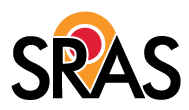Survey of Pre-College Enrollments in Russian Language Classes, 2023
Table of Contents
I. Background
This survey was first conducted by CCPCR, The Committee on College and Pre-College Russian. The committee was created in 1984 as a result of the Report of the National Committee for Russian Language Study (1983), which itself followed a report of the Carter administration’s Presidential Commission on Foreign Language and International Studies (1979). Noting (in 1983) that “enrollments in the Russian language have dropped more precipitously than those in any other major modern language,” the Committee for Russian Language Study, composed of representatives of AAASS, AATSEEL, and ACTR, made 12 recommendations in the Report, among which was an initiative to strengthen pre-college Russian programs and establish a survey of pre-college Russian teaching.
In 2002, CCPCR added an annual fall survey of college/university-level Russian enrollments. CCPCR also gathered data for pre-college enrollments from 1996-2013. SRAS was not able to use this previous data, however, as we discovered extensive data corruption that had occurred in previous server migrations. Thus, our reporting begins with 2018.
CCPCR surveys were coordinated by John Schillinger, now Emeritus Professor of Russian from American University in Washington, D.C. In 2018, Professor Schillinger retired from heading the survey and SRAS, an organization specialized in study abroad to Eurasia and promoting and supporting the study of Eurasia in North America, took over. Find out more about SRAS and our varied projects.
Since 2018 SRAS has, in conference with several Russian teachers, sought to make the survey even richer and more informative. The survey was moved to a larger, electronic questionnaire to allow for extended analysis and the creation of graphics. Additional questions were added based on interests teachers expressed in focus groups conducted by SRAS.
If you are interested in supporting Russian language study at the pre-college or college level or wish to connect with SRAS, either to add information about your program, ask questions, or make recommendations for our projects, please contact us.
II. Notes
Our survey was distributed via the listserv SEELANGS, the SRAS newsletter, and mailings coordinated with the American Council on Teaching Foreign Languages (ACTFL) to their members. The ACTFL has been an invaluable help to this survey effort. SRAS has also conducted extensive individual outreach efforts this year to locate programs and verify contacts.
A total of 52 valid responses to the 2023 survey were received. This is a significant decrease from 2022, when 65 valid responses were received.
A particular challenge of the survey is the fluidity of the field. Many programs – even long-standing ones – are being canceled when the teacher retires or moves on. A change in staff can mean a loss in contact with a program. As there is no national listing for Russian programs, new programs can be very difficult to locate and contact. Most websites for public schools do not contain specific information on individual language programs.
We have found in our outreach efforts that at least several teachers have left primary and secondary education to teach online, for higher education, or to pursue other professional opportunities. We have also found a few cases where language instruction has moved online to programs taught by off-site teachers. As our survey generally relies on teachers submitting their own enrollment data, such arrangements can make gathering information harder.
This survey does not represent a complete census of the pre-college field. The mailing list for the ACTFL identifies 101 different institutions. A larger survey, conducted in 2017 by the American Councils for International Education in conjunction with numerous professional organizations and support from the US government, identified 147 individual high school programs. These lists are outdated – and the circumstatial evidence would indicate that likely there are fewer programs today as we have been more likely to encounter programs closing than new programs opening.
Thus, our survey has managed to contact a smaller number of programs than likely currently exist. However, the institutional diversity and geographic range of these programs is great and we believe our results can still be considered representative of the field. We hope as well that respondent numbers will grow as the survey becomes a regular and, hopefully, more widely known event each year.
III. Overall Enrollment and Program Growth
With extensive outreach efforts, we received a total of 52 responses from schools that currently have students studying Russian, this represents a substantial decrease from last year – due in part to some program closures and some programs simply not reporting this year.
To track trends in enrollment, we can calculate year-on-year growth for any program reporting for two consecutive years. 33 institutions reporting for 2023 had also reported numbers for 2022. About half of these programs reported positive growth with more programs reporting strongly positive growth (of over 20%) than ever before.
With relatively few programs with consecutive reporting to draw from in 2022-2023, a few programs with large changes can skew the data. Two progams reported growth of over 300%. Without those two outliers, average growth falls from 25% to about 4%. That said, the number of programs experiencing healthy growth over the last two years is encouraging.
IV. State-by-State Breakdown
For 2022, survey respondents came from 19 US states, representing about 38% of all states. However, the survey is dominated by a few of them, particularly by eastern states. Most of these states also have significant populations of Russian speakers.
Maryland and New Jersey account for about a quarter of all reported enrollments. Another third is roughly even spread over six other states: Virginia, Massachusetts, Illinois, Pennsylvania, Texas, Ohio, and New York.
New York usually ranks higher – but this year Staten Island Technical High School, a super-large program that usually reports at least 1000 students, did not respond to the survey.
Note that not all segments below are labeled. For the programs top left, hover over the segments to reveal all states listed.
V. Heritage Speakers
Although states with larger Russian speaking populations are generally over-represented here, most programs report that most of their students are, in fact, not heritage speakers.
That said, a greater percentage of programs are reporting larger percentages of heritage speakers this year than ever before. This has come about primarily from programs with higher percentages reporting this year, rather than from growing Russian demographics at these schools.
VI. Grade Breakdowns
For 2023, most reporting programs (44) reported having a high school program. Fewer (13) reported middle school programs and fewer still (10) reported grade school programs. Nearly all growth in program numbers, however, occurred in the two smaller segments.
VII. Requirements and Levels
Most pre-college programs that offer Russian also feature language requirements that can be fulfilled by taking Russian. This year reversed a trend towards more schools with programs requiring language study. This appears to be mostly of function of different programs reporting rather than changing requirements at individual schools.
Most programs also offer advanced instruction – although this year saw a significant dip in programs reporting offering levels higher than 4.
VIII. Types of Instruction
While many programs reported offering online and hybrid instruction in response to COVID-related restrictions in 2020, these are now being phased out as face-to-face and immersion teaching styles become more viable again.
Respondents could select multiple options to reflect all styles used across their programs. Thus, the total below is larger than the overall number of programs reporting.
We believe that there could be more online programs offered through partnerships, but indentifying these can be difficult. So, this segment may be underrepresented here.
IX. Partnerships and Curriculums
In terms of delivering curriculums, the single most popular resource used are self-created materials. After that, textbooks used are largely the same as those used in college level courses, although no single book can really be said to be dominating the field in precollege instruction.
X. Other Languages Offered
Only two respondents indicated that Russian the only foreign language offered. Another seven left the question blank. In all other programs, Russian is most commonly offered with three or four other foreign languages. Numbers of foreign languages offered ranged from one to up to 13. Below are all languages that were historically reported as offered by two or more programs. Note that most have seen dips over the last years – except for Korean, which has grown.
X. Faculty
The 52 schools reporting Russian language enrollments currently employ a total of 66 full-time and 26 part-time Russian teachers. Most commonly, programs are staffed by a single full-time or a single full-time and single part-time teacher.
XI. Data Set
Anyone interested in seeing individual program numbers, program growth calculations, and/or raw data for majors and minors, can do so by accessing this Googlesheet. The original questionaire is archived here.
Surveys for additional years can be found here.
"A long overdue thank you for the wonderful trip you and your staff planned for the Drew group in St. Petersburg. I have never had a trip where NOTHING went wrong. It was a terrific experience from start to finish, your staff was superb and St. Petersburg Economics University was a marvelous host. We enjoyed each and every lecture and guide, and the many fine added touches. I would love to do this again."
- Dr. Carol R. Ueland, Drew University
"Thanks again to (SRAS Assistant Director) Josh Wilson for being so helpful with getting us started! At our concluding discussion class yesterday I asked the students to write and then present five "Kliuchevykh slov" about their experience. Several of them wound up referencing Josh's comments about trying to observe without judging, which he made during the Moscow Walking Tour. Thanks for helping me teach this course!"
- Jane Costlow, Bates College
"Renee, the work that you do is so far beyond any kind of formal service or trip planning in your vision, scope, and ability to think of absolutely everything and anticipate potential problems in advance. You clearly have a gift for this."
- Andrea Lanoux, Connecticut College
"We had a great time overall. The students were super impressed with SRAS -- the guides, the accommodations, the excursions, etc. The guides were super knowledgeable and kind--the only thing that would improve the tours is volume. They tend to speak quietly so a few people who can't hear lose interest. But we loved the Hermitage art project and Novgorod, and the bunker, and going behind the fountains at Peterhof, and the boat to Peterhof... We loved everything!"
- Ona Renner-Fahey, University of Montana
"The SRAS guides were excellent! They really knew their stuff and were able to relate the history of the places we visited in an interesting and inventive way. It was obvious they had a lot of experience working with American students."
- Charles Arndt III, Union College

